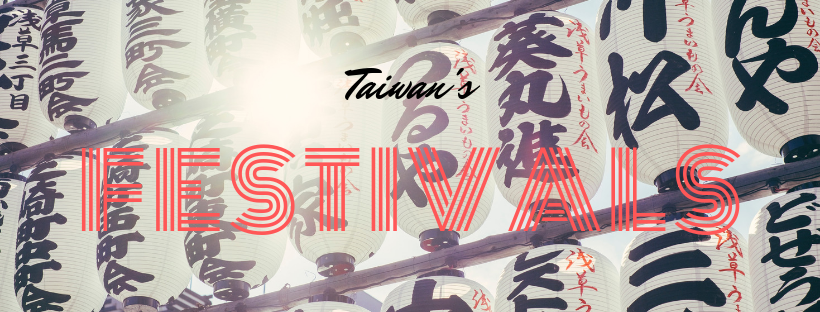Also called 228, this holiday honors those who were killed by the Kuomintang military forces on February 27, 1947. It is a day of sadness and reflection. This event is one of the most important part of Taiwan’s history.
History
End of WW2
Following the victory of the Allies after WW2, Taiwan was handed to the Republic of China (ROC) ending the 50 years of Japanese colonial rule. The Island was now under the control of the Kuomintang.
At first, the troops were welcomed warmly by the Taiwanese, wanting to build a new future together. However that was not the case as corruption and injustice soon arose. During the first year of ruling Taiwan, the Kuomintang implemented many policies that reduced the rights of the Taiwanese citizens.
Inflation rocketed, private properties were seized and poverty rose. For exemple, the price of rice was five times higher than a year before and many police officers and military were abusing their power. (source)
In order to meet the shortages that resulted from the Chinese Civil War, the administration would buy goods cheaply in Taiwan to sell for very high prices back in China.
The KMT admistration confiscated hundred of Japanese-owned factories and mines and maintained monopolies in tea, paper and other produced resources. (source)
From there on, many conflicts arose between the Taiwanese and the KMT.
The Trigger
The tensions finally exploded on February 27 1947 when agents of the Taiwan Tobacco Monopoly Bureau got into an argument with a cigarette peddler and beat her up with a gun. The excessive use of force attracted a large crowd of protesters, horrified by what they have just witnessed. Trying to escape the crowd, an agent fired his gun and killed a bystander. (source)
Taipei Branch of the Bureau of Monopoly, was occupied by angry crowd [1] / Public domain
The next morning on the 28, a crowd gathered at the Governor General’s Office to protest the violent act. Guards responded by firing a machine gun into the crowd resulting in many deaths. Some of the protesters broke into a nearby radio station to broadcast to the island what had just happened.
Following the broadcast, a revolt started and several military bases and government building were seized by unhappy Taiwanese civilians. They were able to control much of Taiwan as the local leaders formed a Settlement Commitee to present the government with a list of 32 demands for reform.
They wanted a free election, greater autonomy an end to government corruption and that the ROC army would surrender to the Settlement Commitee.
However, on March 8th, Governor-General Chen Yi asked for reinforcements and the newly assembled KMT forces began to wipe out the armed resistance. Mass killing were frequent and people went missing. Public executions were carried in Yilan, Tainan and Chiayi. The death toll was between 10 000 and 30 000 people.
The 228 Massacre marked the beginning of the darkest period of the history of Taiwan: The White Terror.
228 Incident (The Terrible Inspection) by Jun Li (Rong-zan Huang) (1916-1952)
White Terror
The White Terror was a period of marital law that lasted 38 years, from 1949 to 1987. According to a study from Hsieh Tsung-min, a former DPP political prisonner, it is estimated that about 140 000 people were imprisoned and 3 000 to 4 000 were prosecuted and executed accused to be Chinese Communist spies. (source)
Chen Yi was systematically target the Taiwanese elite and those who were against KMT rule. The objective was to eliminate the educated and intellectuals in order to break the resistance against the KMT government. Doctors, journalists, professors were targeted.
Many were executed in public to serve as a warning to the rest of the population. The Taiwanese lived in fear of the late-night knocks on their doors and the sound of the firing squads.
The White Terror is the longest period under the Marital Law after the Syrian 48 year-long marital law. Talking about 2.28 was a taboo, in fear of retribution from the KMT.
KMT retreat to Taiwan
At the same time in China in 1949, the KMT was losing the Chinese Civil War and was planning their retreat. The KMT finally decided to settle for Taiwan after the suggestion of Chang Chi-yun, a famous geographer.
He argued that the Japanese infrastructures left behind after WW2, the abondant ressources and the good climate would be able to support a massive population influx.
The Taiwan Strait would make it difficult for Mao’s People Liberation Army to attack them directly. Also, the White terror would make it a stable base for them to settle in, as there would be no opposition from the population.
By May 1949, more than a thousand officers, 800 pilots, 2 600 family members and 6 000 tonnes of equipment have been transported. Between 1 million and 2.5 million chinese arrived to Taiwan from 1948 to 1950. (source)
Chiang Kai-Shek, his legacy and controversy
For nearly four decades, Chiang Kai-Shek ruled Taiwan under the marital law. Taboo, it was forbidden to mention the 228 event and mention any of the killings and disappearances.
Wanting to obtain the graces of the Taiwanese population, Chiang ordered the execution of Governor Chen Yi and gave financial compensation to the victims.
Chen Yi was executed for having mismanaged the tensions between Taiwan and Mainland China and blamed for the 228 Incident.
But the real reason he was executed was because his plan to surrender to the Chinese Communist Party was discovered.
The Martial Law was finally lifted in 1987 by Chiang’s son, 12 years after his death. In the 1980’s, restrictions were relaxed and protests have grown stronger. The leaders, in their 80-90’s, were at risk of heart attack. When a crowd showed up to protest, they called off the Marital Law and told the protesters to go home.
After examination from the 228 Memorial Foundation, all the evidence shows that Chiang was responsible for ordering the executions of civilians in 1947 and beyond. This is why there is a lot of controversy regarding his legacy.
Many people are angry about having monuments honoring Chiang Kai-Shek. Every year, acts of vandalism regarding the past dictatorship are quite common. Statues and emblem from the past are doused with red paint to represent the blood spilled by the KMT. (source)
Aftermath
Marital law lasted till 1987. The first free elections took place in 1992. We have to wait until 1995 until the events from 228 were publicly adressed by President Lee Teng-hui by officially apologizing for the government’s actions. He was the one to declare it a public holiday on February 28 every year.
The 228 Memorial Park, previously known as the New Park, in Taipei's Zhongzheng District. The 228 Monument is located at the center of the park. Picture taken July 2, 2005 by Allen Timothy Chang on the observation deck of the Shin Kong Life Tower.
Since the lifting of the Marital Law, the government has set up the 228 Incident Memorial Foundation to give back donations to the victims and their families of the White Terror.
Following the 228 massacre, many Taiwanese hoped for a greater autonomy from China. This event had an important role towards Taiwan’s independance movement.
Victims of the White Terror have slowly opened up about the whole massacre and what truly happened during that period.
To learn more about the events of 228, you should visit the exhibition at National Museum of Taiwan History.
There is a big lack of awareness towards this event on the international scene. It is caused by the KMT’s censorship and the American government’s effort to cover up their involvement in supporting Chiang Kai-Shek against Chinese Communism. (source)
Celebration
Each year, the president leads a special ceremony that honors the people who were affected by the 228 tragedy and the White terror. After a memorial speech, the president bows to the family of the affected, rings a ceremonial bell and presents each family with a certificate stating that each victim was not guilty of any crime. (source)
Inspiration
A lot of artists have adressed the events of 228 since the lifting of the taboo. Many books and films have been inspired by it but have not gone in deeply.
The movie City of Sadness from Hou Hsiao-Hsien has won the Golden Lion award in 1989 at Venice Film Festival. Formosa Betrayal, a political triller made in 2009 references the 228 Massacre.
Monuments
Taipei 228 Monument
228 Memorial at Taichung




![Taipei Branch of the Bureau of Monopoly, was occupied by angry crowd [1] / Public domain](https://images.squarespace-cdn.com/content/v1/5a4134b618b27d418cc25681/1582725977076-OK4FZ5LD3DFEJII5CAPD/image-asset.jpeg)






